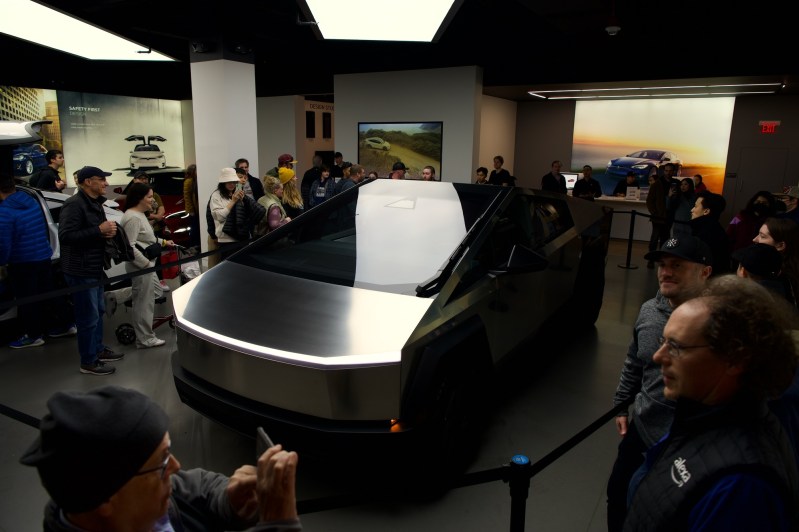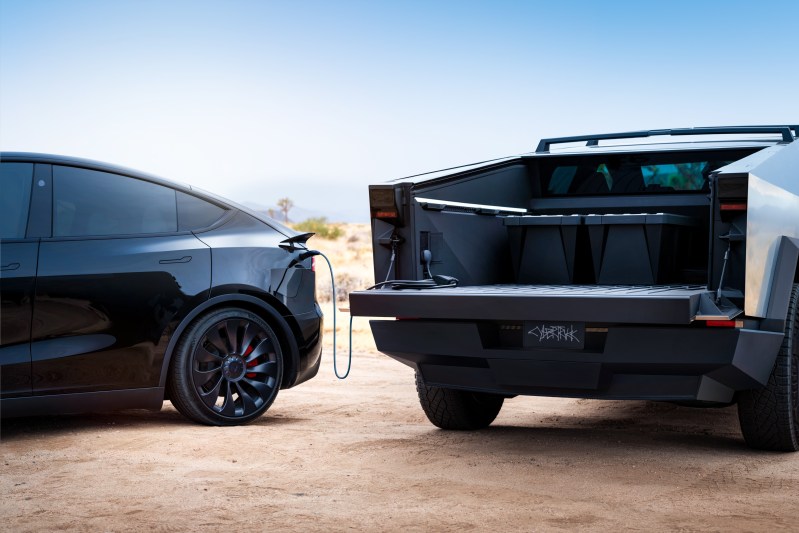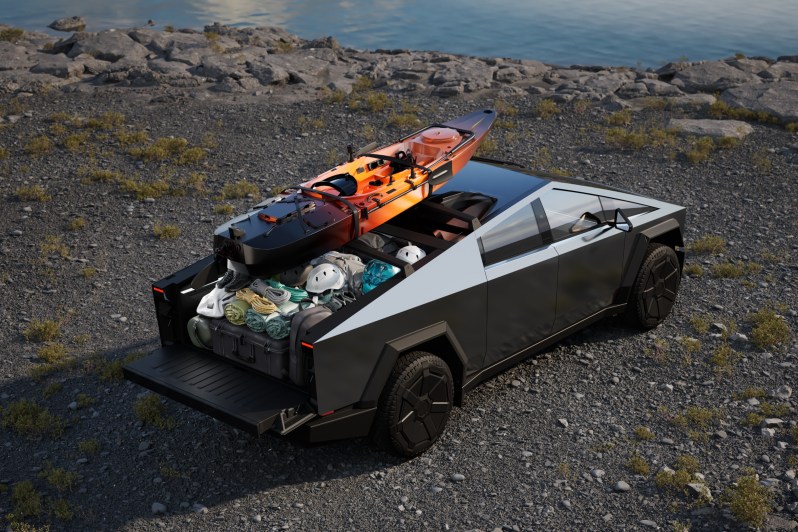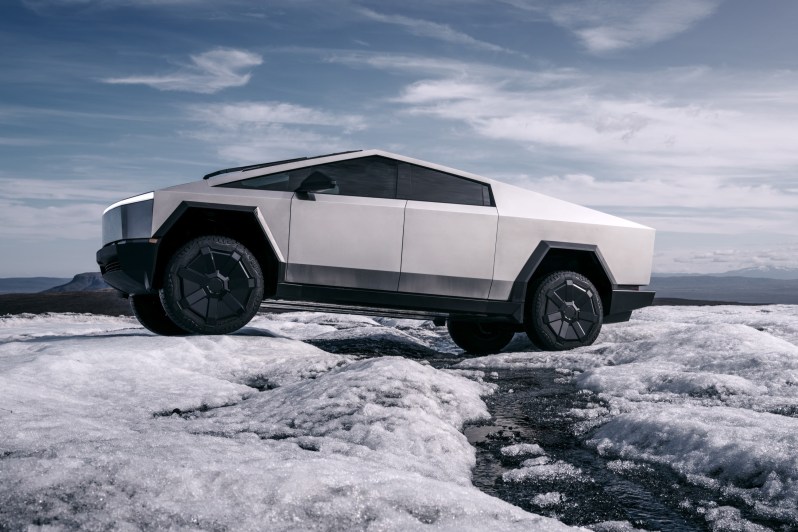The Tesla Cybertruck is finally here. The newly launched Cybertruck maintains the divisive look of the prototype, but the irresistible numbers leading up to and during the original reveal in late 2019 fall short.
When Elon Musk introduced the Cybertruck in November 2019, most observers immediately declared love or hatred for its stainless steel exterior design. Musk said deliveries would start in late 2021, but few listeners took the delivery date seriously due to the delayed launches of the Tesla Model X and Model 3.
In 2019, the Cybertruck’s proposed cost and capacities were outstanding. According to Musk, the Cybertruck would have a 6.5-foot bed, travel up to 500 miles per charge, carry 3,500 pounds of cargo, and tow 14,000 pounds, with a starting price of $39,900. If Tesla could deliver the Cybertruck as promised, it would compete with the Ford F-150 and GM 1500 series pickups on price and compare with the Ford SuperDuty F-250 and F-350 and GM 2500 and 3500 series trucks on capacity and capabilities.

The Cybertruck vision and the reality
Four years since the announcement and two years later than initially projected, the Cybertruck is in Tesla showrooms. We now know three Cybertruck versions will be: rear-wheel drive (RWD) starting at $60,990, all-wheel-drive (AWD) for $79,99o, and the full-out performance-focused Cyberbeast starting at $99,990.
Notably, the first model available for delivery in early 2024, the AWD Cybertruck, is slightly more than twice as expensive as the 2019 teaser price. Reservation holders who opt for the Cyberbeast will wait until late 2024 for deliveries to begin. Tesla now says that the base rear-wheel-drive Cybertruck delivery will start in 2025.
The price went up, but the other numbers all decreased. The payload capacity fell to 2,500 pounds from 3,500 pounds, the towing maximum dropped from 14,000 to 11,000 pounds, and the six-foot bed length was six inches shorter than the original specification.
None of the three Cybertruck models have a 500-mile range between charges. Tesla estimates a range of 250 miles for the RWD version, 340 miles for the AWD model, and 320 miles for the Cyberbeast. An optional extended-range battery option will boost the AWD model’s maximum range to 470 miles. The price for the extended-range battery is not yet available, but based on an image on Tesla’s website, it will take up about one-third of the storage space in the truck’s 6-foot by 4-foot bed.

Specs and features shared by all Cybertrucks
So, the Cybertruck costs more and doesn’t meet all the originally touted expectations, but that doesn’t tarnish its impact on the EV truck market. While Ford’s F-150 Lighting EV truck sells better than initially expected and Chevrolet and RAM electric trucks will commence deliveries within the next 12-to-18 months, none of those electric truck alternatives to Tesla strays far from the traditional pickup truck mold. Starting with its oversized door wedge design, the Cybertruck is anything but conventional.
The Cybertruck models differ in starting price, range, horsepower equivalent, torque, and acceleration, but they share more than their stainless steel skin. According to Tesla, the Cybertruck’s ultra-hard, unpainted exoskeleton minimizes damage from impact. The trucks have an electronically adaptive air suspension with 17 inches of clearance and up to 12 inches of travel. Shatter-resistant acoustic armor glass in the windows and the all-glass roof will protect the truck interior and keep it quiet. The cabin seats five adults, including three in the second row.
The truck can hold up to 2,500 pounds of cargo in 67 cubic feet—the sliding bed cover locks to protect the contents. Folding the second-row seats provides 54 cubic feet of additional storage. The Cybertruck has a fully steer-by-wire system with rear-wheel steering, enabling a smaller turning radius than most trucks and cars. Tesla also states the Cybertruck can regain up to 136 miles of range in 15 minutes when connected to a Tesla Supercharger.

Cybertruck RWD model, $60,990 starting price, available in 2025
Of the three Cybertruck models, Tesla has released the most minor information about the rear-wheel drive version. So far, it will have an estimated maximum range of 250 miles between charges, zero-to-60 mph acceleration in 6.5 seconds, 112 mph top speed, and 7,500 pounds towing capacity. The rear-wheel-drive Cybertruck will be available in 2025 with a $60,990 starting price.

Cybertruck AWD model, $79,990 starting price, available in 2024
There’s a fair chance that the all-wheel-drive Cybertruck will be the most popular model. Buying such an otherwise capable truck with only two-wheel-drive and the RWD model’s 250-mile range doesn’t make much sense, so this is the smart money choice.
The Cybertruck AWD variant produces 600 horsepower and 7,435 pound-feet of torque for zero-to-60 mph acceleration in 4.1 seconds. The top speed is 112 mph, the same as the RWD version, so it’s likely limited electronically. Towing capacity increases from the RWD’s 7,500 pounds to 11,000 pounds.
With up to 340 miles range between charges, AWD Tesla Cybertruck owners may pass on giving up a sizable chunk of the truck’s bed space for the extended-range battery option that boosts the range to 470 miles. This version of Cybertruck Tesla says you can add up to 136 miles of range pugged into a Tesla Supercharger for just 15 minutes.

CyberBeast, $99,990 starting price, available in 2024
Tesla Model S Plaid owners will likely dominate the list of early Cybertruck reservation holders who opt for the CyberBeast. Performance is usually nothing but blurry numbers when the digits go this high. Still, the CyberBeast’s reasonably outrageous 845 horsepower and astounding 10,296 pounds of torque are enough to clear anyone’s head long enough to ask, “What will you do with all that power?.”
Tesla assures owners that zero-to-60 mph times of 2.6 seconds are possible, although the engineers again limit the top speed, in this model cutting off at 130 mph. Possibly thinking that the ability to tow anything larger than a fully loaded Airstream Classic trailer at high speeds might not be the best idea, Tesla rates the Cyberbeast’s maximum towing capacity at 11,000 pounds, the same as the AWD model.
The maximum range per charge for the Cyberbeast is 320 miles, although knocking off a few acceleration runs on the way to soccer practice could knock that number down appreciably. With the optional range extender, the Cyberbeast maximum range rises to 440 miles. Suppose Cyberbeast owners exercise the vehicle’s capabilities with regularity. In that case, I suspect Tesla’s aftermarket sales group could do well selling range extender packs to Cyberbeast owners who didn’t add one to their original order. Hooked to a Tesla Supercharging station, the Cyberbeast adds 128 miles range in 15 minutes, Tesla says.




